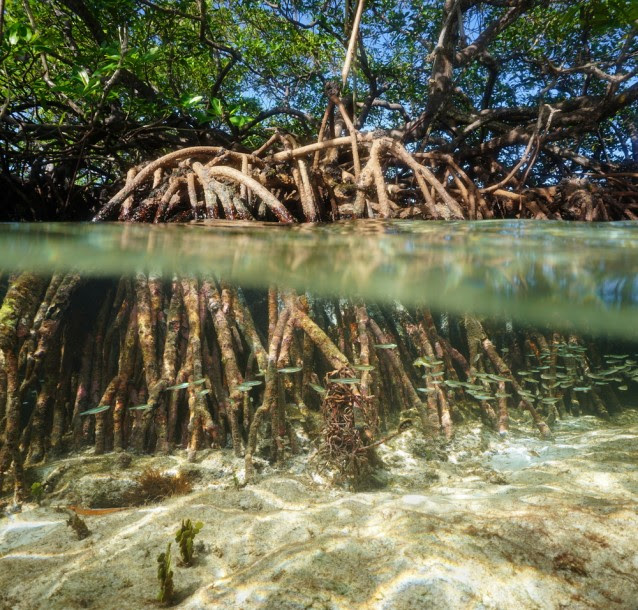Protesters call for an independent Environmental Impact Assessment (EIA) of Rampal coal plants
than 300 species of plants, 200 species of fish, 315 species of birds
and 49 species of mammals. And soon, the World Heritage site will sit
just over eight miles south from two huge coal plants — planned
developments that many worry will damage the air and water quality of
the forest and destroy the livelihoods of the thousands in Bangladesh
and India.
environmental and human rights protesters have anything to do with it,
however, that won’t happen. Last week, hundreds of activists marched
more than 150 miles from the Bangladeshi capital of Dhaka to the
southwestern Bagerhat District, a four-day protest that ended over the
weekend. The protesters called on the government to halt plans for
the 1,320-megawatt Rampal coal plant and the 565-megawatt Orion coal
plant, both planned for Bangladesh. The larger Rampal plant, which would
take up more than 1,800 acres of land, is scheduled to go online in 2021.
protesters were also calling on the government to conduct an
independent Environmental Impact Assessment (EIA) of the coal plants,
said Sharif Jamil, coordinator of Waterkeepers Bangladesh. The
Bangladeshi government did conduct an EIA on the Rampal power plant, but
it used the Center for Environmental and Geographic Information
Services, a government-run agency, to do so. Since the Rampal plant is a
joint project of India’s state-owned National Thermal Power Corporation
and Bangladesh’s Power Development Board, getting a government agency
to conduct the EIA “raises questions on the objectivity of the report,” a
study on the coal plants by South Asians for Human Rights states.
hope the governments will understand the importance of the Sundarbans
and will cancel the permits, and we demand [the] government to ensure
independent investigation by the EIA before any such plant be declared,”
Jamil said.
worries about the power plants are multi-faceted. They’re concerned
about the construction phase of the plants, which could lead to “severe
damages to the ecosystem…due to excessive carriers on the rivers,
clearing of forests, leaked oil, sound and light pollution, [and]
disposal of waste and for dredging of the rivers,” as outlined in the report by
South Asians for Human Rights. Once the plants are completed, the
government’s Environmental Impact Assessment estimates they will put out
142 metric tons of sulfur dioxide and 85 metric tons of nitrogen
dioxide per day — pollution that would damage the air of the Sundarbans,
Jamil said. The coal plants “have a huge potential to do harm to the
wildlife and unique biodiversity of the Sundarbans,” he said.
We hope the governments will understand the importance of the Sundarbans and will cancel the permits Water pollution is also a major concern. The Rampal power plant would take 219,600 cubic meters of water from the Passur River,upstream from
the Sundarbans, every day for its operations. The coal plant’s
activities could end up changing the river’s salinity and temperature,
said Neha Mathew, associate campaign representative with the Sierra
Club. That change in salinity and temperature could be dangerous for the
mangroves that depend on the river. In addition, the area’s rivers will
be used to ship coal to the plant, causing concerns of a spill.
Environmentalists are acutely aware of the potential of a fossil fuel
spill in the Sundarbans: in December 2014, an oil tanker spilled92,000 gallons of oil into the Sundarbans’ Shela River.
storm surges and flooding: two things that could get worse as climate
change progresses. Even without the threat of the coal plant — whose
emissions will contribute to climate change — sea level rise isthreatening to submerge the Sundarbans.
 |
| Fish swim among mangrove roots. CREDIT: SHUTTERSTOCK |
see no reason why this project would destroy the Sundarbans, as
alleged,” Ujjwal Bhattacharya, managing director of the Bangladesh-India
Friendship Power Company (BIFPC), told the Guardian.
“coal would be covered while transporting to the plant. So water or air
will not be polluted. The water will be processed through improved
technology. No polluted or hot water will be discharged to the river,”
and that “a small portion of the river Pashur will be used, which in no
way will affect the river.”
the power plant had “deficiencies in project design, planning,
implementation and due diligence obligations render the project
non-compliant with the minimum social and environmental standards established by the Equator Principles.”
